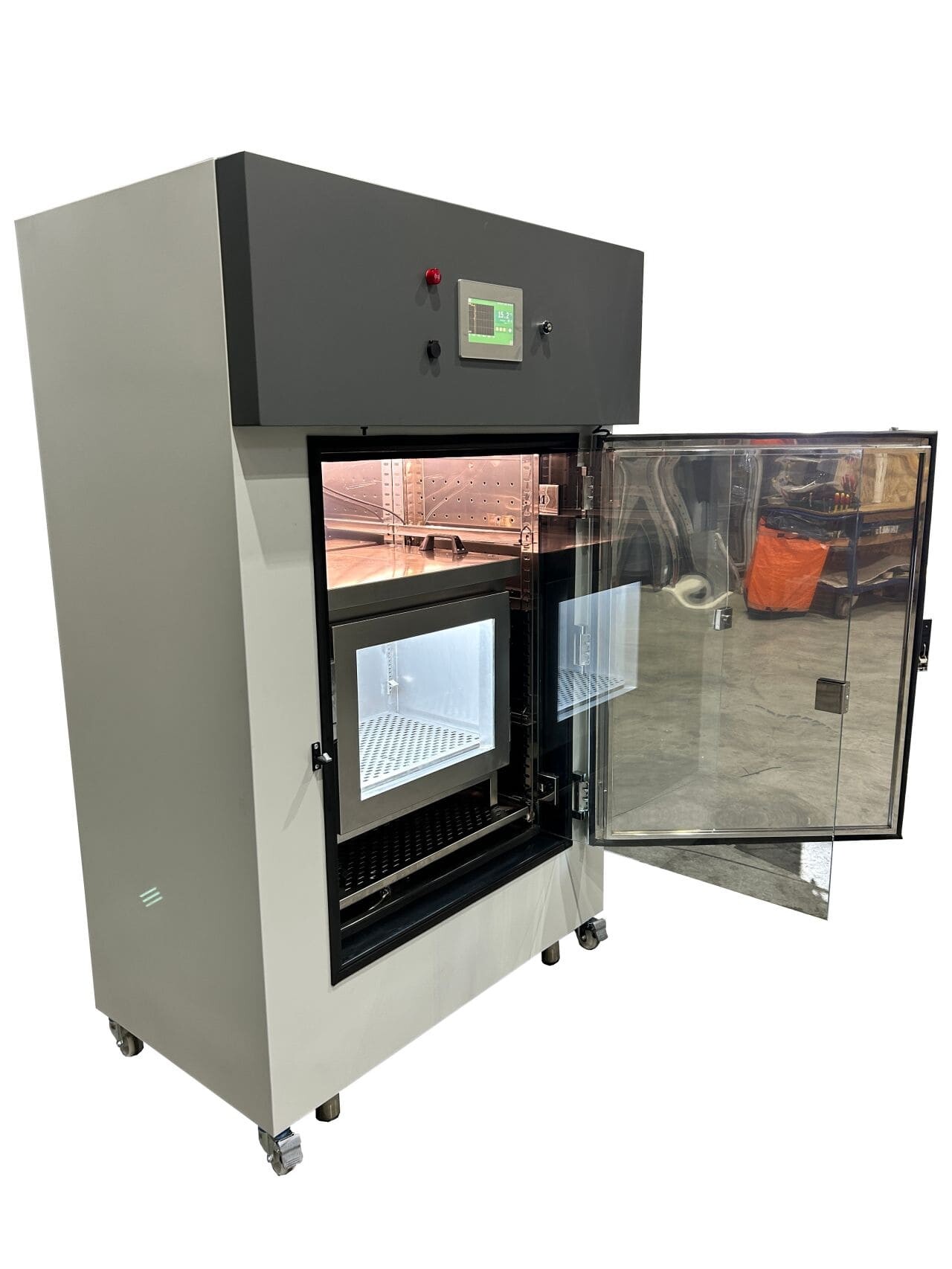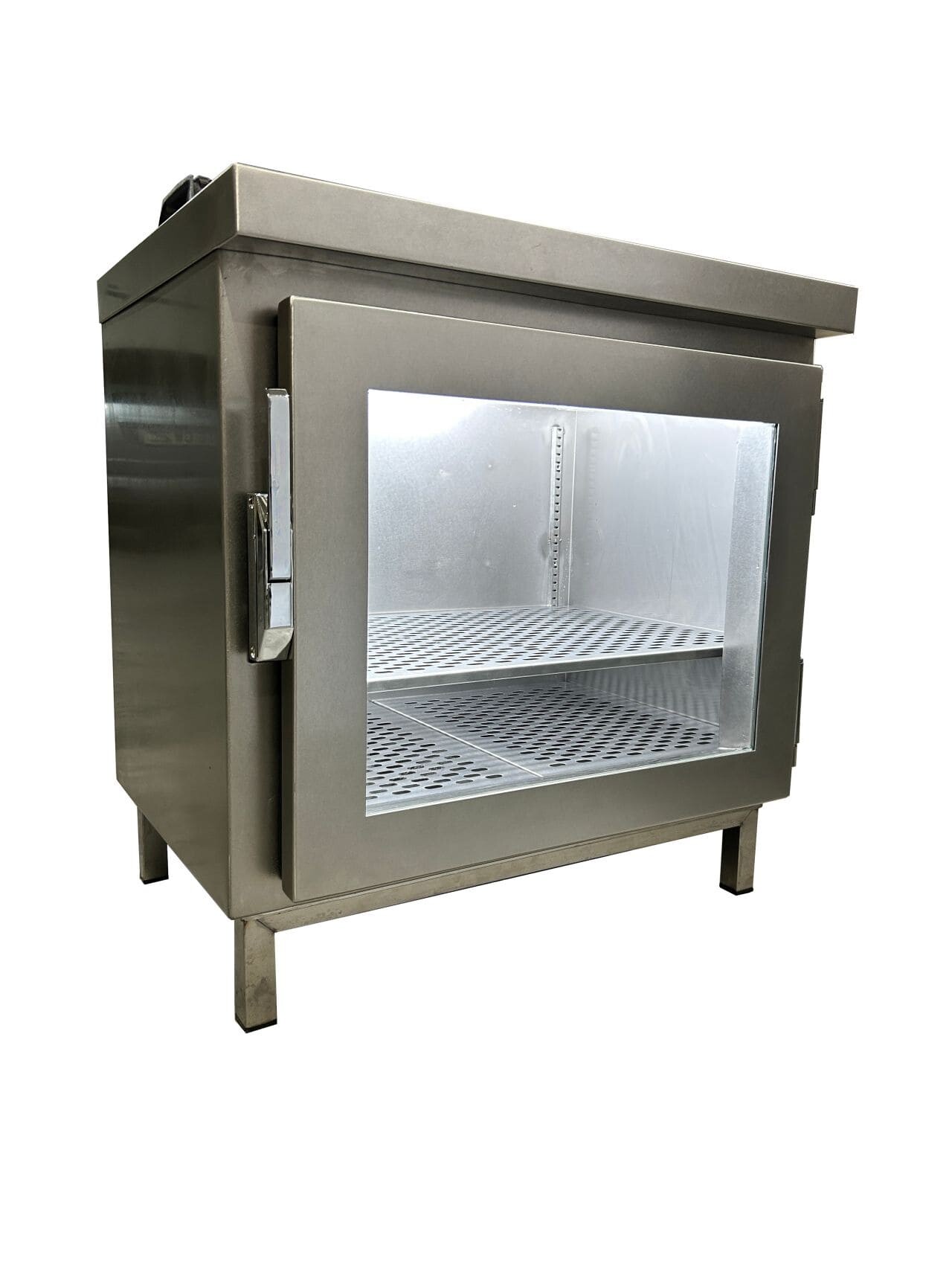Introduction
Exposure of plastic materials to the elements is a constant challenge for various industries. Factors such as ultraviolet radiation, heat and moisture can degrade the quality and integrity of these products, affecting their performance and service life. ISO 4892-3 establishes standardised methods for evaluating the resistance of materials to the action of sunlight and other environmental elements, simulating real conditions through controlled tests in climatic chambers.
Context and Challenge
Companies involved in the manufacture and development of plastic materials need to have accurate and replicable tests that allow them:
- Predict the behaviour of materials in the face of prolonged exposure to the elements.
- Guarantee the durability and resistance of their products.
- Optimise research and development processes, minimising costs associated with poorly controlled or repetitive tests.
The main challenge was to have equipment that could simulate environmental conditions in a standardised way, controlling critical factors such as UV radiation, heat and humidity simultaneously.
The Solution: Climatic Chamber with Ultraviolet Light
Our UV Light Climatic Chamber has been specifically designed to meet the requirements of ISO 4892-3. Some of its key features include:
- Fluorescent UV radiation: Simulates direct exposure to the sun or filtered through windows, ensuring accurate assessment of material degradation.
- Temperature control: Allows a controlled heat range to be set and maintained, replicating different climatic conditions.
- Humidity and water cycle control: Simulates the action of rain and ambient humidity, crucial for replicating the effects of weathering.
- Lighting flexibility: In addition to UV light, a range of fluorescent lamps can be chosen to suit various test requirements.
This chamber is easily integrated into quality control laboratories, providing reliable and reproducible results that enable informed decisions on product improvement and new product development.

Test implementation according to ISO 4892-3
The testing process with the UV climatic chamber follows a series of standardised steps:
-
Sample preparation
Plastic parts are prepared according to the specifications of the standard, ensuring a correct representation of the material in real use conditions.
-
Parameter settings
- UV radiation: The light intensity level is adjusted to simulate sun exposure.
- Temperature and humidity: Heat and humidity cycles, including exposure and cooling periods, are programmed to replicate varying environmental conditions.
- Water cycles: Watering or condensation cycles can be included to simulate rain and dew action.
-
Test execution
During the test, the camera records data in real time, allowing to evaluate degradation, colour change, loss of strength or any other relevant factor in the sample.
-
Analysis of results
The data obtained is analysed to determine the material’s resistance to weathering factors, providing essential information for the development of more durable products.

Benefits and Results Obtained
- Accuracy and reproducibility: The ability to accurately control each environmental parameter ensures consistent and comparable tests.
- Cost savings: Standardisation of the process reduces the need for repetitive testing and reliance on skilled labour.
- Improved product development: With reliable results, companies can optimise formulations and processes to produce stronger, higher quality materials.
- Regulatory compliance: Facilitates product validation and certification, ensuring compliance with international standards.
Conclusion
The implementation of our Ultraviolet Light Climatic Chamber for standardised testing to ISO 4892-3 represents a significant advance in the evaluation of the durability of plastic materials. By providing a controlled and replicable environment, this equipment allows companies to accurately predict how their products will perform in real-world conditions, ensuring long-term quality and durability.
If you are interested in learning more about this solution or in performing advanced tests to evaluate the durability of your plastic materials, please do not hesitate to contact us.

